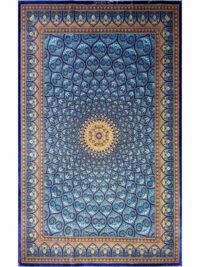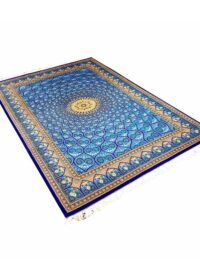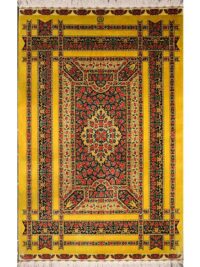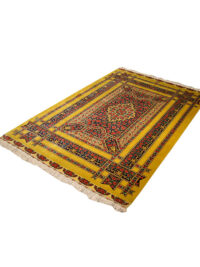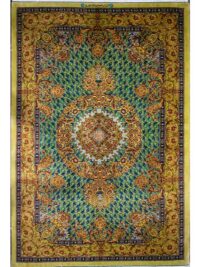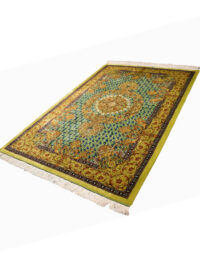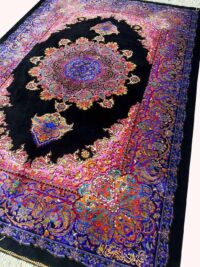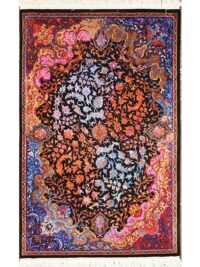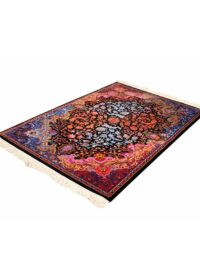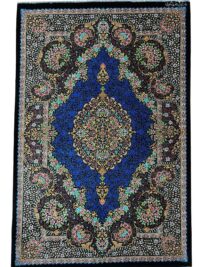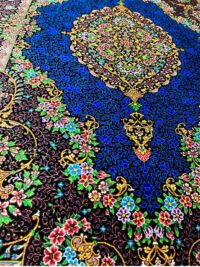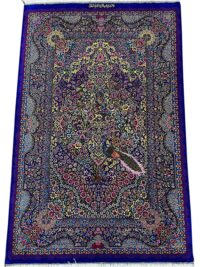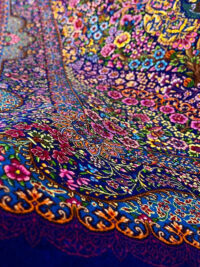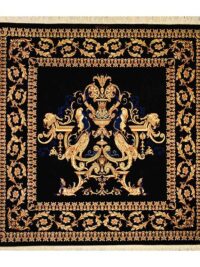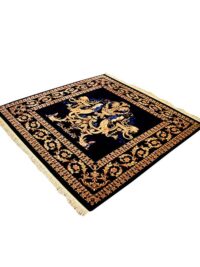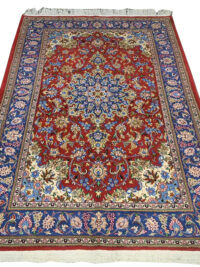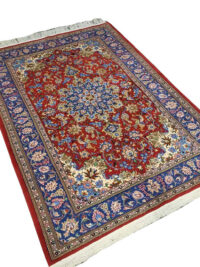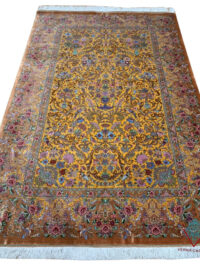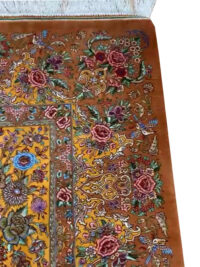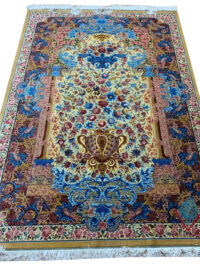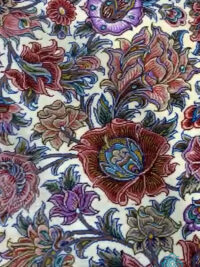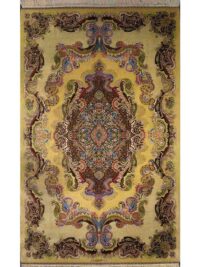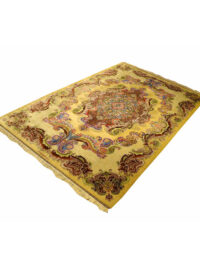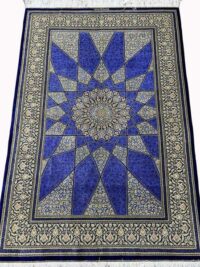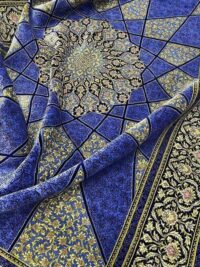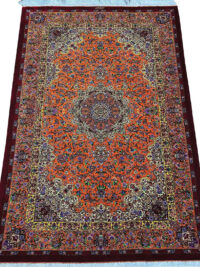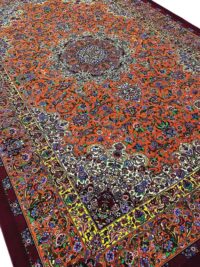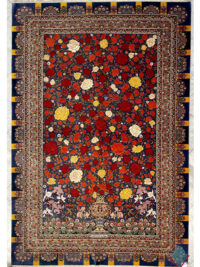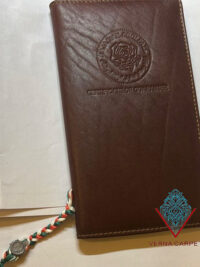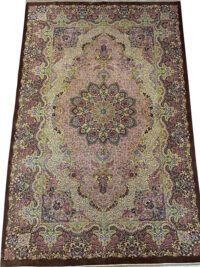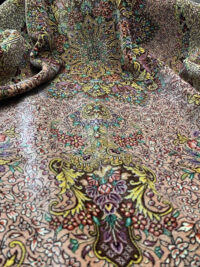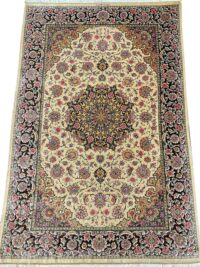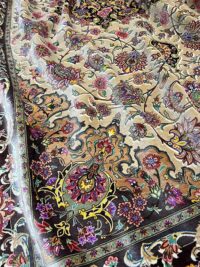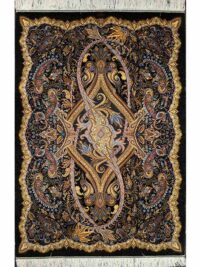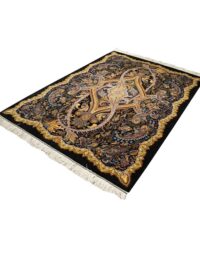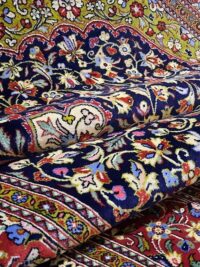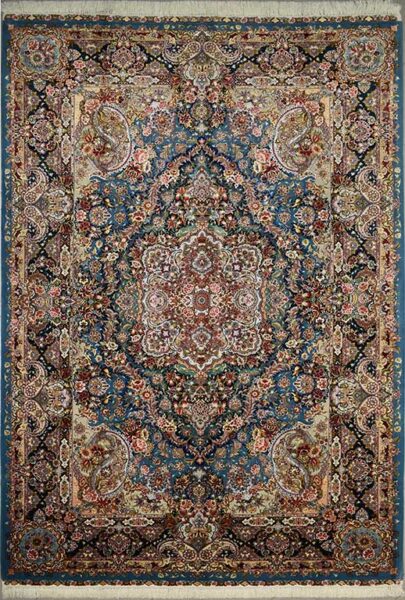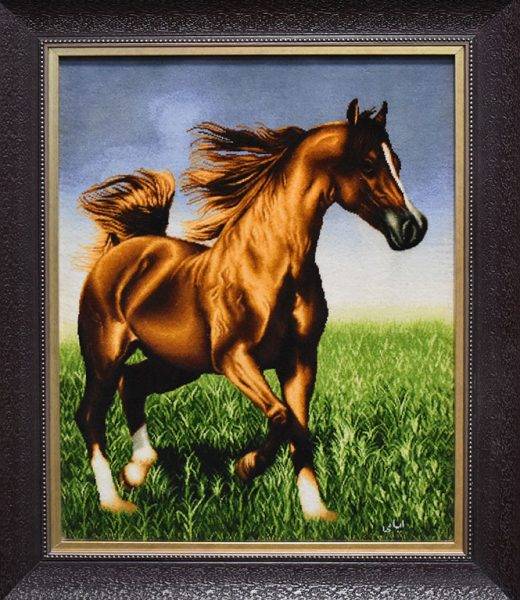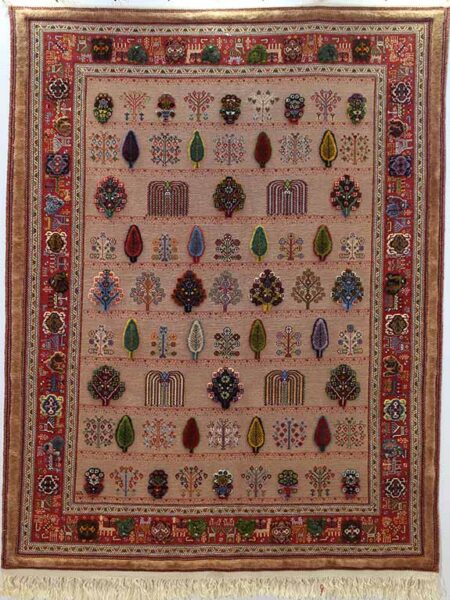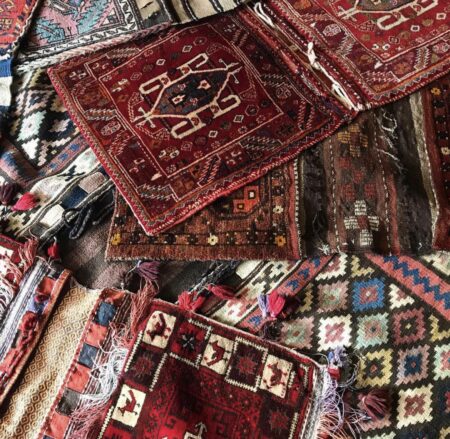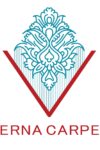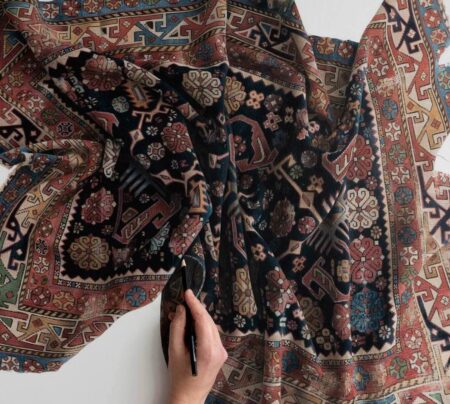
Showing 1–20 of 25 results
History of Qom carpet
Qom is an ancient city in the south of Tehran in the center of Iran. The carpet weaving industry has traditionally been common among the nomads and villagers of Qom. But about 80 years ago carpet weaving started in this city in a new way . Qom city has a great feature of accepting immigrants and because it is located between the big cities of Isfahan, Kashan and Arak, by attracting immigrants and carpet weavers of these cities , The carpet industry has progressed. Qom carpet rarely has a special design and the carpet patterns of this region are similar to the designs of other cities. The designs of this carpet follow the principles of other Iranian carpets in terms of overall structure . There is always symmetry and correct combination of components in design of Qom carpet. And even if it is not like Lachak-Toranj design, proper arrangement in different sections and color proportions is considered to achieve balance.
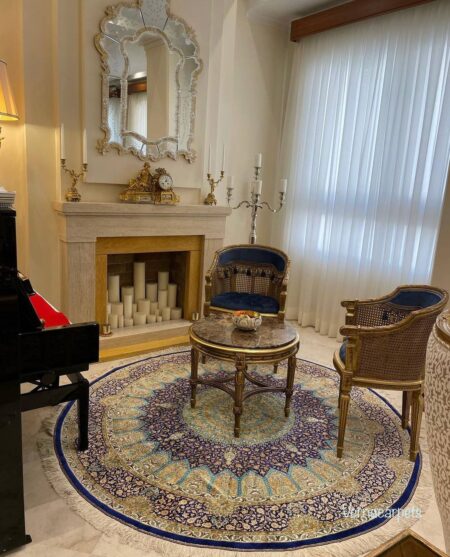
Interior design with Qom silk carpet
Features of Qom silk handwoven carpet
-
- The silk used in the Qom carpet is completely natural, soft and first class.
- Qom carpet is very finely woven and has high elegance.
- Qom carpet has many color variations.
- This carpet has a high knot density, so it is more difficult to weave.
- The density of knots in the Qom carpet is very high, and this has made its weaving more difficult.
- The coordination of color and design is very special and unique.
- All raw materials used from silk to other materials are completely natural and chemicals are often not used. Therefore, it does not harm the environment and is environmentally friendly.
- The number of carpet knots in this area is higher than other carpets, which makes its design high quality.
- Behind the carpets of other cities, knots or warps were placed together irregularly, which reduces the quality of the carpets in these areas. But in the Qom carpet, such defects will not be seen on the back of the carpet, which is due to the high skill of the Qom weavers.
The designs used in Qom carpet
The main designs of Qom carpet are: Lachak-Toranj, Afshan , Kaf-Sade , Moharramat, Hunting-Ground, Geometric , Kheshti , Tree of life, etc.
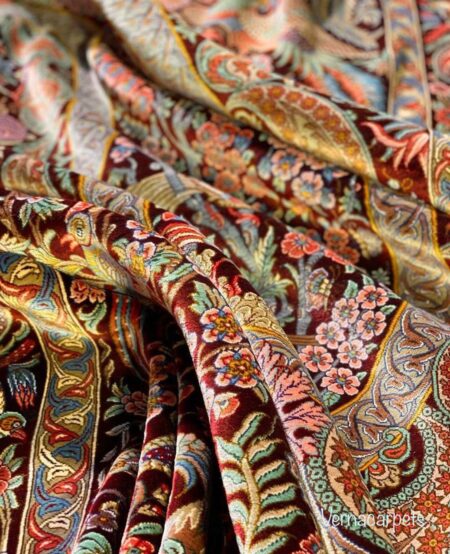
Pure silk carpet
Qom carpet colors
The number of colors used in Qom carpets was initially limited to 4-6 colors, but with the evolution of the initial designs of Qom carpets, the number of colors in Qom carpets has also increased. The main colors of Qom carpet consist of 16 colors as follows: white, light and dark red, navy blue, cream, beige, black, khaki , light and dark blue, black, gold and copper, dark brown , light brown.
Types and classification of dyes
The raw materials of natural dyes that have been traditionally used in Qom city for a long time are:
Pomegranate peel:
This substance is found in abundance in Qom province, it is used in dry and powdered form to prepare a dark yellow, creamy color.
Walnut shell:
This material is used to prepare brown color and while mixing with black alum, it produces black color.
Grape leaves:
yellow color derivatives are obtained from this substance.
Sumac:
This substance gives a dark purple-brown color if mixed with copper sulfate.
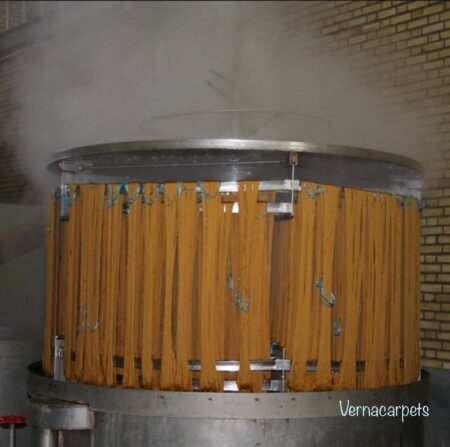
Dyeing silk in pots
Indigo:
This material used to be cultivated as a plant, but today it is produced as industrial indigo, and the color of navy blue and blue color derivatives are obtained.
Madder:
It is a plant that has a color substance hidden in its root and is used to obtain red colors.
Cochineal:
This substance is obtained from the body of a special insect and is used to prepare dark red. Natural dyes combined with special metal salts are used to create stable colors that become softer and more pleasant over time.
Also read: Types of Natural Dyes in Carpets and Their Characteristics
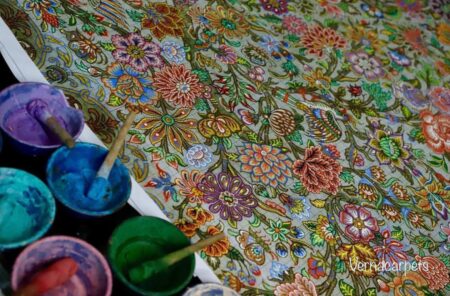
Map of silk rug
How is Qom carpet woven?
The first step in the production of this work of art is the drawing of the map, which is done professionally by genuine Iranian designers. At this stage, the design of the carpet is drawn with a pencil and on special papers, and then it will be painted with the taste of the designer, and after the design of the carpet is finalized, it is given to the carpet weaver.
The second step is to prepare and spin the silk thread, which is done in Kashan. Silk is a natural thread that is taken from the silkworm cocoon. The main ingredient of silk thread is protein, and it is considered one of the best, softest, and strongest threads in the world. First-class Chinese silk is used in Qom carpets.
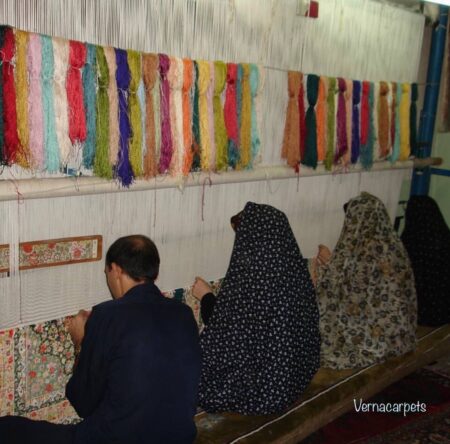
Weaving Qom rug
In the third step, the silk threads are dyed. The dyeing of the silk threads is based on the design of the carpet and the colors needed in the texture of the carpet. For this purpose, natural and vegetable dyes such as alum, pomegranate peel, walnut peel, madder root, etc, are used so that the woven carpet is completely natural and its color is non-chemical. First, the silk thread is boiled with natural and herbal dyes, it is placed in the fresh air to dry, and then it is washed in running water and dried again to be completely ready for use in carpet weaving. The herbal and natural color of silk for the weaving of the handmade carpet increases its durability, and washing the carpet does not change its color and creates a natural look in the carpet that cannot be compared to any machine-made carpet.
The next step is to prepare the rug and the tools needed for carpet weaving. In the past, the looms were all wooden and nowadays sometimes they are wooden or metal. Love, art, and elegance are the characteristics of Qom carpet weavers who weave the hand-woven carpet knot by knot while reciting poetry and praying, and they combine their human spirit and art with each knot and create a masterpiece that cannot be compared to any floor covering.
The tools used include a knife with a hook at the end and scissors and a heavy comb that place the rows of knots together. As with any other carpet, the weavers take a piece of thread and tie a knot and cut off the excess threads. The Qom weaver uses the Persian knot and continues knot by knot until the end of the row. After finishing each row, the weft is passed between the warp and then the knots and the weft are tied together using a heavy comb.

Final operation on the carpet
The skilled weavers of Qom can make about 8000 knots per day on a carpet with a width of one hundred centimeters and a knot density of 1 million per square meter. If the carpet is 150 cm long, it will take approximately 1 year to weave. The stage of carpet weaving Depending on the size of the carpet, it may last from 6 months to 3 years. After the carpet is finished, it is separated from the loom and ready for service.
After finishing the weaving, the carpet is polished and the upper layers of the carpet are shortened so that the surface of the carpet is completely smooth and uniform. After this step, the carpet is washed with Qom water and detergents until it is completely clean and uniform and there is no dirt. Qom water is the best water for washing carpets due to its salinity.
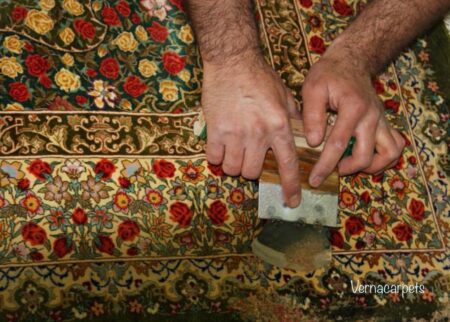
Trim the piles
Determining the price of carpets in Qom
Due to its time-consuming and high sensitivity, the Qom carpet has a special way to determine the price. From the beginning of the carpet weaving to the end, an amount is given to the weaver as a fee every week or every month. After finishing the weaving of the carpet, a council called wage council is formed. The members of this council, who are experts in carpet weaving, are responsible for determining the price of carpets. This pricing is based on the type of fibers used in production, dimensions, quality, texture, etc. Finally, the production manager is obliged to pay the amount specified by the council to the weaver.
Qom carpet export
Qom is the most important center of handwoven silk carpet production in the country and more than 90% of handwoven carpets produced in this province are exported to different countries. On average, 40,000 square meters of handwoven silk carpets are produced in Qom every year, and about 10 million dollars of carpets are exported from the Qom. The target markets of these carpets are mostly European, American and Asian countries.
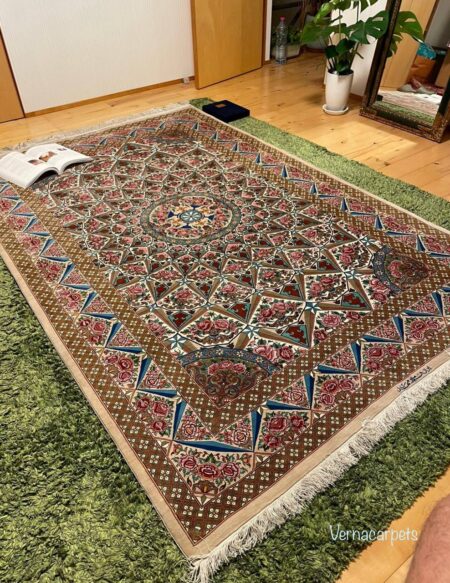
Silk rug in Japan,by master Mirmahdi
Online purchase of Qom carpet
Qom silk carpet is one of the important and famous Iranian handicrafts, which is of particular importance at the global level. When many people see Qom silk carpet for the first time, they think it is a painting, and after touching it and hearing the explanation about it, they realize that it is not a painting, but is made of millions of knots of silk thread. The existence of multiple stages and the efforts of dozens of experts and loving artists, the use of silk as a natural thread and plant materials for dyeing, creates a unique combination of authenticity, history and culture, which can be seen in the hand-woven Qom silk carpet and as a lasting and exquisite product, it is a beauty of every home.
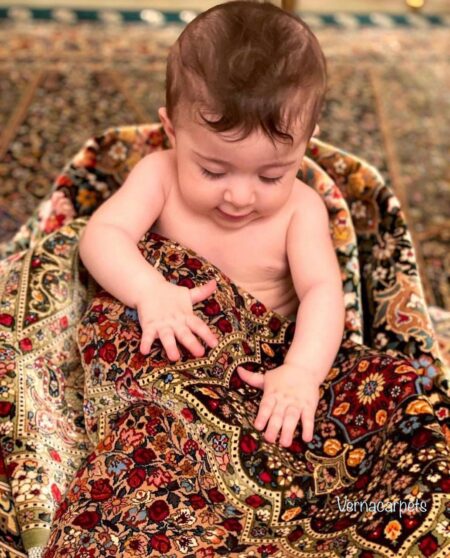
Qom silk rug
Several factors such as carpet size, silk quality, carpet brand, the number of colors used in the carpet, the type of design, texture density are influential in determining the price of Qom handmade carpet. Since these carpets are often of high quality and the duration of their weaving is long and the demand for them is very high, therefore the price of the hand-woven all-silk Qom carpet is higher than other Iranian carpets. These prices are constantly changing due to market fluctuations. Vernacarpets with the experience of cooperating with the reliable manufacturers of Qom silk carpet and providing the desired quality will help you for a pleasant purchase. Like other products, there are also low-quality silk carpets in the market, so it is better to get help from an expert to buy carpets.

